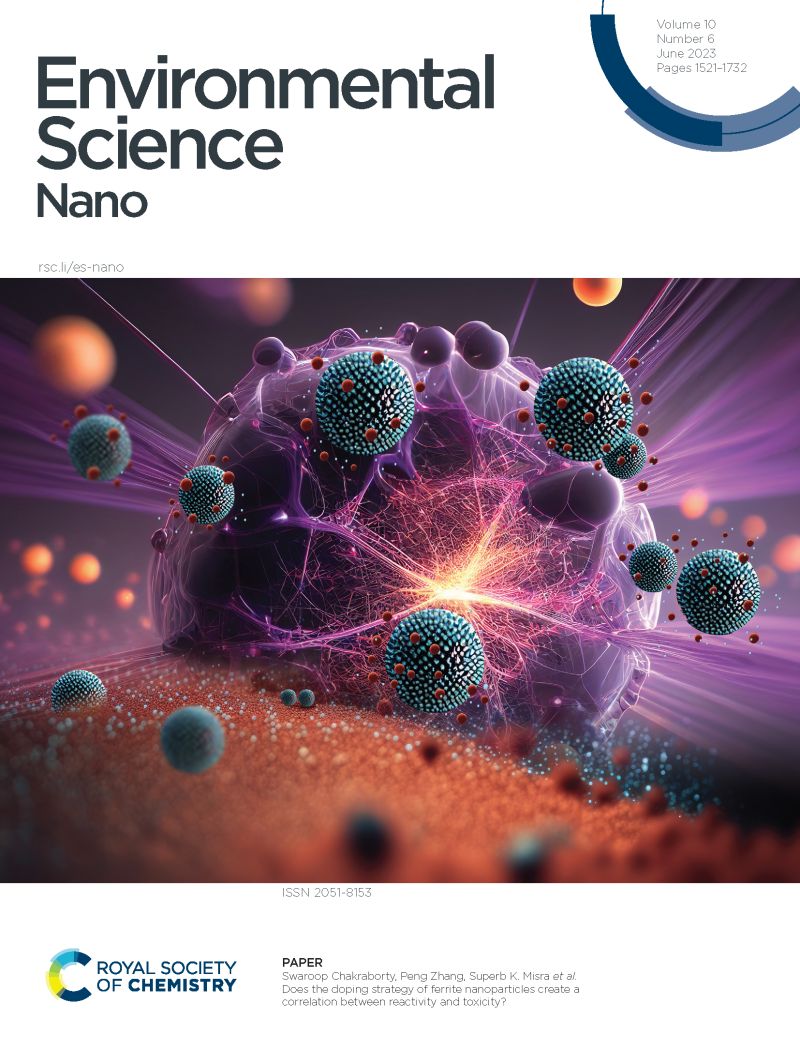Room Temperature Capture of Hazardous Gases by Sustainable N-doped Graphene Aerogel
IF 5.1
2区 环境科学与生态学
Q1 CHEMISTRY, MULTIDISCIPLINARY
引用次数: 0
Abstract
The escalating release of anthropogenic volatile organic compounds (VOCs) and toxic gases (TGCs) have become a key environmental concern. The quest to address the complex capture challenges for VOCs/TGCs removal calls for innovative, advanced, highly efficient and sustainable materials. A straightforward, one-step, low-cost, sustainable and scalable technique was used for the synthesis of nitrogen-doped graphene aerogel (N-GA) from waste jaggery with 3D interconnected network, super-hydrophobicity, and high surface area. The efficiency of waste jaggery derived N-GA as multifunctional adsorbent for VOCs/TGCs under ambient conditions is investigated in both gaseous and liquid states in a reversible manner. The N-GA realizes the adsorption-based capture of diverse TGCs/VOCs such as dichloromethane (DCM), H2S, CS2, benzene and NH3 with adsorption capacity over 1226, 1002.07, 885.58 mg g-1, 792.9, 489.4 mg g-1, respectively with high regeneration capability over 10 cycles. The feasibility of N-GA for organics removal in aqueous medium has also been tested for diverse organic solvents. That is relevant for direct application in indoor/outdoor air purification technologies, water remediation and ecosystem protection.可持续n掺杂石墨烯气凝胶室温捕集有害气体的研究
人为挥发性有机化合物(VOCs)和有毒气体(TGCs)的不断释放已成为一个关键的环境问题。为了解决VOCs/TGCs去除的复杂捕获挑战,需要创新、先进、高效和可持续的材料。采用一种简单、一步、低成本、可持续和可扩展的技术,从废渣中合成氮掺杂石墨烯气凝胶(N-GA),该技术具有三维互联网络、超疏水性和高表面积。在气态和液态可逆条件下,研究了废杂渣衍生N-GA作为环境条件下VOCs/TGCs的多功能吸附剂的效率。N-GA实现了对二氯甲烷(DCM)、H2S、CS2、苯和NH3等多种TGCs/VOCs的吸附捕集,吸附量分别为1226、1002.07、885.58 mg g-1、792.9、489.4 mg g-1,在10次循环中具有较高的再生能力。N-GA去除水中有机物的可行性也在不同的有机溶剂中进行了测试。这与室内/室外空气净化技术、水修复和生态系统保护的直接应用有关。
本文章由计算机程序翻译,如有差异,请以英文原文为准。
求助全文
约1分钟内获得全文
求助全文
来源期刊

Environmental Science: Nano
CHEMISTRY, MULTIDISCIPLINARY-ENVIRONMENTAL SCIENCES
CiteScore
12.20
自引率
5.50%
发文量
290
审稿时长
2.1 months
期刊介绍:
Environmental Science: Nano serves as a comprehensive and high-impact peer-reviewed source of information on the design and demonstration of engineered nanomaterials for environment-based applications. It also covers the interactions between engineered, natural, and incidental nanomaterials with biological and environmental systems. This scope includes, but is not limited to, the following topic areas:
Novel nanomaterial-based applications for water, air, soil, food, and energy sustainability
Nanomaterial interactions with biological systems and nanotoxicology
Environmental fate, reactivity, and transformations of nanoscale materials
Nanoscale processes in the environment
Sustainable nanotechnology including rational nanomaterial design, life cycle assessment, risk/benefit analysis
 求助内容:
求助内容: 应助结果提醒方式:
应助结果提醒方式:


